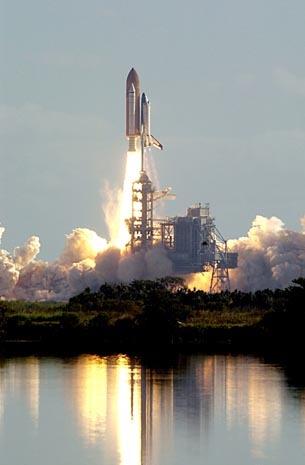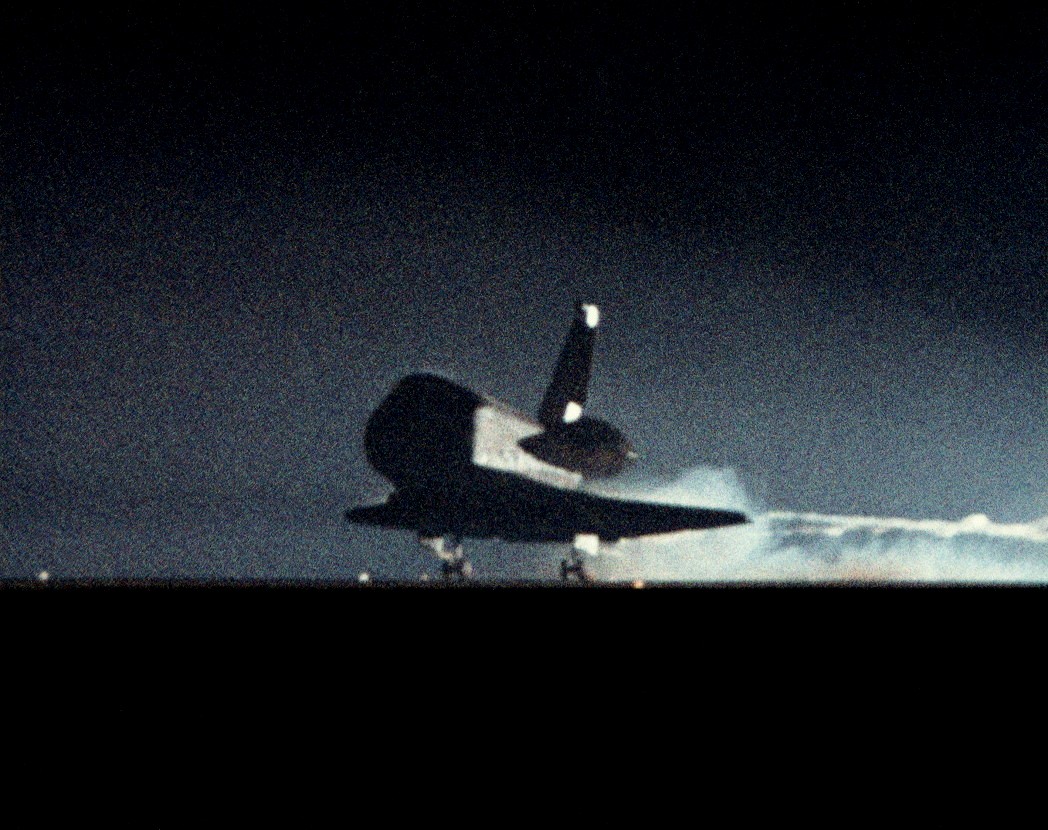

In order to fulfill the USAF's mission to launch payloads into polar orbit, the USAF insisted on a very large cross-range requirement. NASA secured funding from the US Air Force's budget in exchange for USAF input to the design process.Some reasons for the higher-than-expected operational costs were: Overall, 135 missions were launched during the 30 years after the first orbital flight of Columbia, averaging approximately one every 3 months. Missions were put on hold again after the loss of Columbia in 2003. Eventually the military resumed the use of expendable launch vehicles instead. This hiatus became lengthy and ultimately lasted almost three years as arguments over funding and the safety of the program continued. Following the Challenger accident in 1986, missions were halted pending safety review.

However, by the mid-1980s the concept of flying that many shuttle missions proved unrealistic and scheduled launch expectations were reduced 50%. Beginning in 1981, the space shuttle began to be used for space travel. These claims were made in an effort to obtain budgetary funding from the United States Congress. Development costs were expected to be recouped through frequent access to space. The Shuttle was originally billed as a space vehicle that would be able to launch once a week and give low launch costs through amortization. The Shuttle was also intended for research into the human response to zero-g. The shuttle would also enable astronauts to launch satellites from the shuttle and even repair satellites already out in space. Other experiments would study how things can be manufactured in space. It would afford the opportunity to conduct science experiments on board the shuttle to be used to study the effects of space flight on humans, animals and plants. "Space Transportation System" (NASA's formal name for the overall Shuttle program) was created to transport crewmembers and payloads into low Earth orbits. Two out of the five spacecraft were destroyed in accidents, killing 14 astronauts, the largest loss of life in space exploration. NASA's promotion of and reliance on the Shuttle slowed domestic commercial expendable launch vehicle (ELV) programs until after the 1986 Challenger disaster.

NASA budget pressures partly caused by the chronically high NASA Space Shuttle program costs have eliminated NASA manned space flight beyond low earth orbit since Apollo, and severely curtailed use of unmanned probes. It failed in the goal of achieving reliable access to space, partly due to multi-year interruptions in launches following Shuttle failures.

This should be contrasted with the originally envisioned costs of $260 per kilogram ($118 per pound) of payload in 1972 dollars (approximately $558 per pound adjusting for inflation to 2019). When all design and maintenance costs are taken into account, the final cost of the Space Shuttle program, averaged over all missions and adjusted for inflation (2008), was estimated to come out to $1.5 billion per launch, or $60,000 per kilogram ($27,000 per pound) to LEO. In contrast, the comparable Proton launch vehicle is said to cost as little as $110 million, or around $5,000 per kilogram ($2,300 per pound) to LEO, despite not being reusable. īy 2011, the incremental cost per flight of the Space Shuttle was estimated at $450 million, or $18,000 per kilogram ($8,200 per pound) to low Earth orbit (LEO). Space Shuttle incremental per-pound launch costs ultimately turned out to be considerably higher than those of expendable launchers. Fundamentally, it failed in the goal of reducing the cost of space access. Criticism of the Space Shuttle program stemmed from claims that NASA's Space Shuttle program failed to achieve its promised cost and utility goals, as well as design, cost, management, and safety issues.


 0 kommentar(er)
0 kommentar(er)
